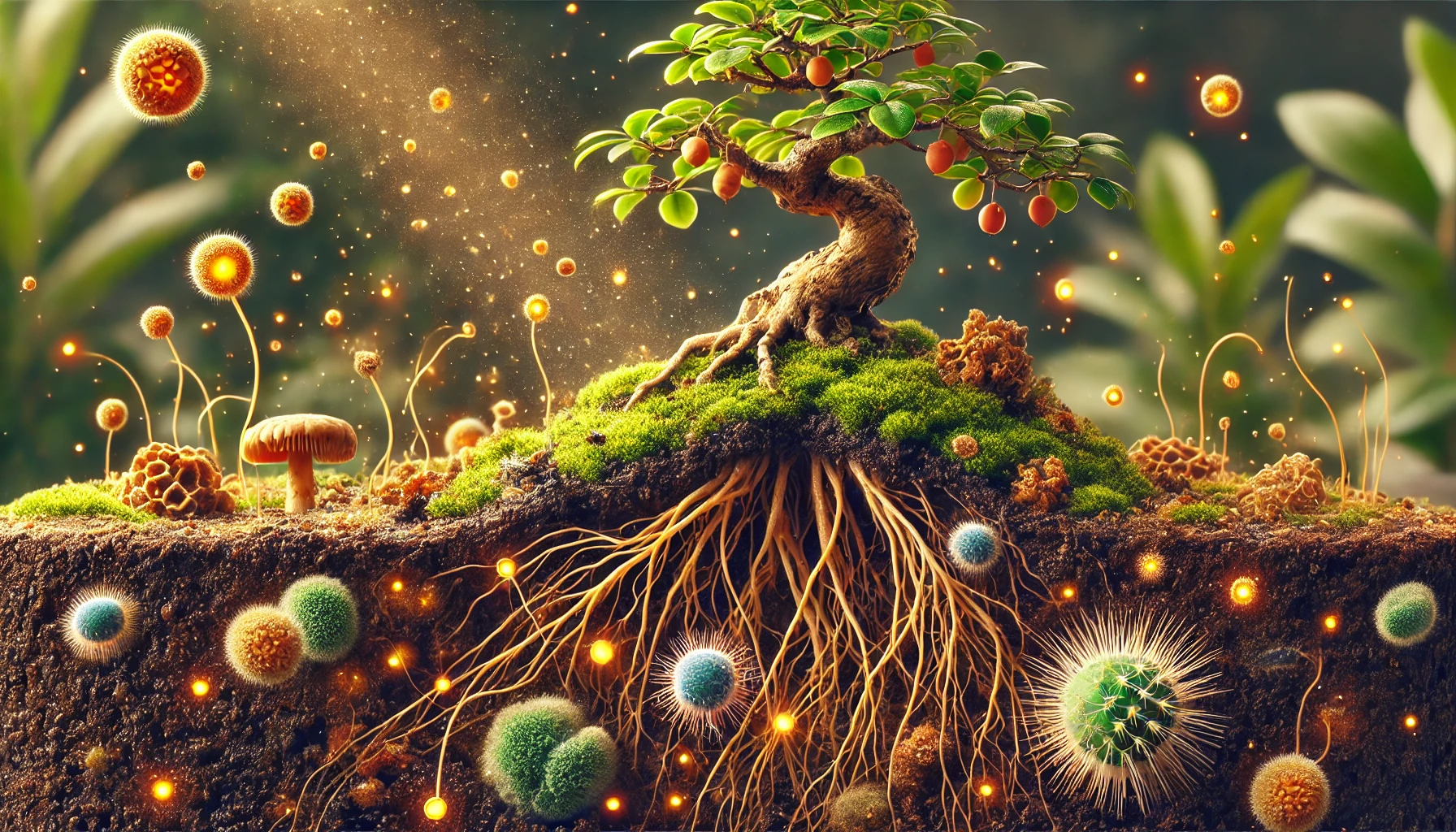Fertilizing is a crucial part of maintaining a healthy and fruitful bonsai tree. A well-fertilized bonsai not only looks vibrant but also thrives by producing beautiful flowers and fruits. Natural fertilization methods are an excellent choice for bonsai care, as they enhance soil quality while minimizing environmental impact. This comprehensive guide explores everything you need to know about naturally fertilizing fruiting bonsai trees.
Why Fertilizing Is Essential for Fruiting Bonsai
Bonsai trees grow in limited soil, which restricts their access to nutrients. Over time, the soil’s nutrient content depletes, leaving the bonsai vulnerable to poor growth, weak branches, and reduced fruiting. Fertilizing replenishes these nutrients, ensuring the bonsai has the necessary components for healthy growth and fruit production.
Key nutrients a bonsai needs include:
- Nitrogen (N): Promotes leaf and stem growth.
- Phosphorus (P): Encourages root development and flowering.
- Potassium (K): Enhances overall strength and fruit production.
Natural fertilizers provide these nutrients in a gentle, eco-friendly manner, avoiding the harsh effects of synthetic chemicals.
Benefits of Using Natural Fertilizers for Bonsai
- Improved Soil Health: Natural fertilizers enrich the soil with organic matter, boosting its ability to retain water and nutrients.
- Safe for the Environment: Unlike synthetic options, natural fertilizers reduce the risk of chemical runoff, protecting nearby plants and water sources.
- Sustainable Growth: Organic methods support the tree’s long-term health and encourage a balanced ecosystem in your bonsai pot.
Types of Natural Fertilizers for Fruiting Bonsai
Organic Compost
Compost is a rich, nutrient-packed material made from decomposed plant and kitchen waste. It improves soil structure and provides a steady release of nutrients.
How to Use:
- Mix a small amount of compost into the bonsai’s soil during repotting.
- Spread a thin layer of compost on the surface of the soil every few months.
Manure
Well-rotted animal manure, such as cow or chicken manure, is an excellent source of nitrogen and organic matter.
How to Use:
- Allow manure to age for at least six months to reduce its potency and avoid burning the roots.
- Mix a small quantity into the soil or apply it as a top dressing.
Bone Meal
Bone meal is a natural source of phosphorus and calcium, ideal for promoting root and flower development.
How to Use:
- Sprinkle bone meal lightly over the soil surface.
- Water thoroughly to allow nutrients to seep into the soil.
Fish Emulsion
Fish emulsion is a liquid fertilizer made from fish waste. It’s rich in nitrogen and micronutrients, making it an excellent choice for healthy foliage growth.
How to Use:
- Dilute fish emulsion according to the package instructions.
- Apply during the tree’s active growing season, avoiding overuse to prevent root damage.
Seaweed Extract
Seaweed-based fertilizers are rich in potassium and trace minerals, boosting fruiting and overall resilience.
How to Use:
- Dilute the extract in water as per instructions.
- Spray directly onto the bonsai’s leaves or apply to the soil.
Homemade Organic Fertilizer
You can create your own fertilizer using kitchen scraps, like banana peels, eggshells, and coffee grounds. These materials provide essential nutrients such as potassium, calcium, and nitrogen.
How to Use:
- Blend the scraps into a fine paste.
- Apply small amounts to the soil, ensuring even distribution.
How to Apply Fertilizers to Fruiting Bonsai
Fertilizer Frequency
- Spring and Summer: Fertilize every two to four weeks during the growing season. This is when the bonsai requires the most nutrients for leaf, flower, and fruit development.
- Fall: Gradually reduce fertilization to help the tree prepare for dormancy.
- Winter: Avoid fertilizing during dormancy, as the tree’s nutrient needs are minimal.
Application Methods
- Top Dressing: Spread the fertilizer evenly over the soil’s surface and water thoroughly.
- Liquid Fertilizer: Dilute liquid fertilizers in water and pour them directly onto the soil.
- Foliar Feeding: Spray diluted liquid fertilizer onto the leaves, allowing nutrients to be absorbed directly.
Best Practices for Natural Fertilization
- Avoid Over-Fertilizing: Over-fertilization can lead to salt buildup, root burn, and reduced fruiting. Always use fertilizers sparingly.
- Monitor the Tree’s Response: Keep an eye on leaf color and growth patterns to determine if the bonsai is receiving the right amount of nutrients. Yellowing leaves may indicate nutrient deficiencies, while overly vigorous growth can signal excess nitrogen.
- Combine Fertilizer Types: Using a mix of organic fertilizers ensures the tree receives a balanced supply of nutrients.
- Use Well-Draining Soil: Fertilization is most effective when the bonsai is planted in well-draining soil that allows nutrients to reach the roots.
Signs Your Bonsai Needs Fertilizer
- Yellowing Leaves: Indicates nitrogen deficiency.
- Stunted Growth: May result from a lack of phosphorus or potassium.
- Poor Flowering and Fruiting: Suggests the tree needs more phosphorus and potassium.
- Weak or Drooping Branches: Often caused by insufficient nutrients overall.
The Role of Microorganisms in Organic Fertilization
Natural fertilizers encourage the growth of beneficial microorganisms in the soil. These microbes break down organic matter, releasing nutrients in forms the bonsai can absorb. Additionally, they help protect the tree from harmful pathogens and improve soil aeration.
Common Mistakes to Avoid
- Fertilizing Too Soon After Pruning or Repotting: Allow the tree to recover before applying fertilizers.
- Using Unaged Manure: Fresh manure can burn the roots and harm the bonsai.
- Ignoring Seasonal Needs: Adjust fertilization schedules based on the tree’s growth cycle and seasonal changes.
- Applying Fertilizer to Dry Soil: Always water the bonsai before fertilizing to prevent root damage.
Fertilizing a fruiting bonsai naturally is a fulfilling process that strengthens the tree while preserving the environment. By using organic materials, monitoring the tree’s needs, and following proper techniques, you can ensure your bonsai thrives with vibrant leaves and abundant fruits.

